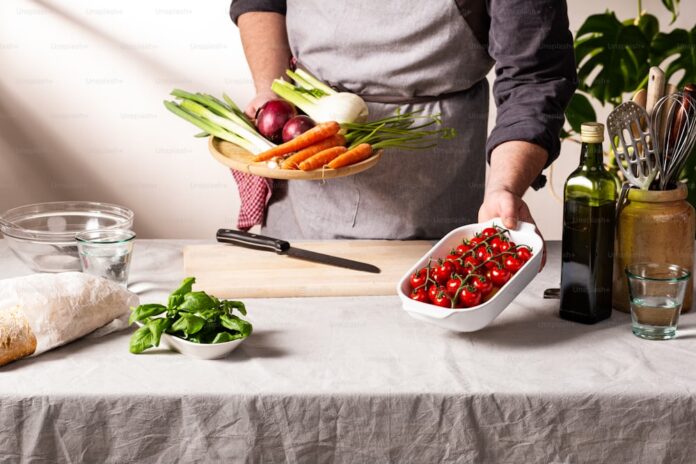In the world of culinary arts, precision is paramount, and every detail counts towards creating a memorable dining experience. Whether you are a home cook preparing a cozy family meal or a professional chef crafting an elaborate gourmet dish, achieving the correct temperature is not just a matter of food safety but also a fundamental aspect of culinary excellence and optimal flavor. A kitchen thermometer is an indispensable tool for ensuring that your dishes are safe to eat and cooked to perfection, unlocking the full potential of each ingredient. This article delves into the different types of kitchen thermometers available on the market and their varied uses. It underscores the critical importance of temperature accuracy in cooking. By understanding how to utilize these tools, amateur and seasoned chefs can effectively elevate their culinary creations, ensuring consistent and impeccable results every time.
Types of Kitchen Thermometers
1. Digital Instant-Read Thermometers
Digital instant-read thermometers have garnered immense popularity among cooks and chefs alike for their exceptional speed and accuracy. These reliable tools provide temperature readings within seconds, making them indispensable for checking the doneness of a wide range of foods, including meats, poultry, and fish. Their instantaneous readings ensure that your dishes are cooked to the perfect temperature, preventing undercooking or overcooking. These thermometers consist of a sharp, slender probe attached to a user-friendly digital display, allowing straightforward and quick temperature checks. This design eliminates the need for prolonged insertion into the food, minimizing heat loss and ensuring the cooking process remains uninterrupted. The precision that digital instant-read thermometers offer is vital for those seeking to achieve culinary excellence, as even slight variations in cooking temperatures can significantly impact the texture and flavor of the final dish.
2. Dial Oven-Safe Thermometers
These thermometers are designed to remain in the food throughout the cooking process. They are usually inserted into significant cuts of meat or whole poultry before being placed in the oven. The dial display shows the temperature as the food cooks, allowing you to monitor progress without opening the oven and letting heat escape.
3. Infrared Thermometers
Infrared thermometers measure surface temperatures without any physical contact. These are exceptionally useful for checking the temperature of baking surfaces, grills, or liquids. While they don’t provide internal temperature readings, they are excellent for quick checks in various cooking scenarios.
4. Candy and Deep-Fry Thermometers
These specialized thermometers are designed to withstand high temperatures and are used for tasks like monitoring sugar stages in candy making or maintaining the correct oil temperature for deep frying. They often come with clips to attach to the side of pots for continuous temperature monitoring.
5. Probe Thermometers with Timers
Probe thermometers come with a long, heat-resistant cable attached to a probe that can be left in the food while it cooks. This type often includes a timer and an alarm that sounds when the desired temperature is reached, making it convenient for ensuring precise cooking without constant supervision.
Importance of Kitchen Thermometers
1. Food Safety
One crucial reason for using a kitchen thermometer is to ensure food safety. Undercooked food, especially meats, can harbor harmful bacteria like Salmonella and E. coli. A kitchen thermometer helps ensure that food reaches a safe internal temperature, eliminating potential foodborne illnesses.
2. Optimal Flavor and Texture
Cooking food to the right temperature ensures safety and enhances flavor and texture. Overcooking can dry out meats and make them challenging, while undercooking can leave them unpalatable. For instance, a perfectly cooked steak is achieved by monitoring its internal temperature to hit the desired doneness—rare, medium-rare, or well-done.
3. Consistent Results
For chefs and home cooks aiming for consistency, thermometers are invaluable. They allow you to replicate successful recipes by consistently achieving the same temperatures. This consistency is critical in baking, where precise temperature control can differentiate between a perfectly risen cake and a dense, undercooked one.
4. Efficiency in Cooking
Using a kitchen thermometer can improve cooking efficiency by reducing guesswork and the need for constant checking. When you know your food’s exact temperature, you spend less time and energy monitoring and adjusting cooking settings, allowing you to focus on other aspects of your meal preparation.
Tips for Using Kitchen Thermometers
1. Calibration
Ensure your thermometer is calibrated correctly. You can check its accuracy in ice water (it should read 32°F or 0°C) and boiling water (it should read 212°F or 100°C at sea level).
2. Proper Placement
When measuring internal temperatures, place the probe in the thickest part of the food, away from bone, fat, or gristle. This ensures an accurate reading of the food’s core temperature.
3. Cleanliness
After each use, clean your thermometer thoroughly to prevent cross-contamination. Follow the manufacturer’s instructions for cleaning, especially if the thermometer is not waterproof.
4. Avoid Submerging Digital Units
For digital thermometers, avoid submerging the entire unit in water. Only the probe must be cleaned unless the manufacturer specifies that the whole unit is waterproof.
Conclusion
A kitchen thermometer https://che-bro.com/ is a vital tool that significantly enhances food safety and culinary excellence. Providing accurate temperature readings eliminates the guesswork often associated with cooking, ensuring that your dishes are always prepared to perfection. Whether you are monitoring the precise temperature of a slow-roasting prime rib, checking the doneness of a perfectly seared steak, or ensuring that your deep-fry oil is at the optimal heat, a kitchen thermometer is your trusty companion. Investing in a high-quality thermometer and using it correctly can elevate your culinary efforts, bringing increased safety, precision, and consistency to your cooking creations. The importance of a kitchen thermometer cannot be overstated—from safely reaching the required temperatures to achieve tender, juicy results to hitting the perfect degree for candy making. This indispensable tool is a cornerstone of successful kitchen practices.


